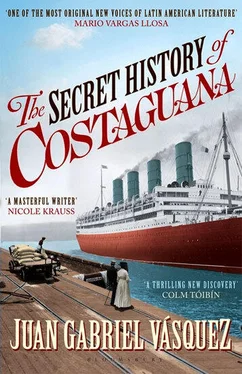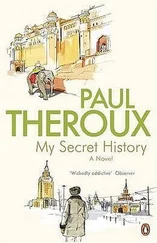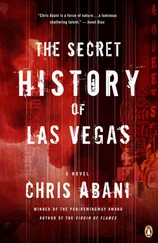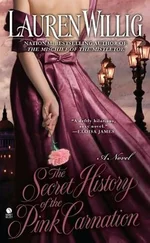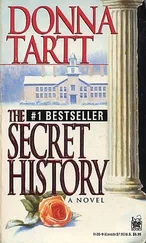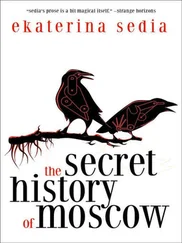November 12,1902. The postcard that commemorates that disastrous date is well known (everyone’s inherited the image from their victorious or defeated fathers or grandfathers; there’s no one in Colombia who doesn’t have a copy of that memento mori on a nationwide scale). Mine was printed by Maduro & Sons, Panama, and measures fourteen by ten centimeters. Along the bottom edge in red letters appear the names of the participants. From left to right and from Conservative to Liberal: General Victor Salazar. General Alfredo Vásquez Cobo. Doctor Eusebio Morales. General Lucas Caballero. General Benjamín Herrera. But then we remember (those who have the postcard) that there is among these figures — the Conservatives with mustaches, the others bearded — a notable absence, a kind of emptiness that opens in the middle of the image. For Admiral Silas Casey, the great architect of the Wisconsin Treaty, the one in charge of talking to those on the right and convincing them to meet with those on the left, is not in it. He’s not there. Nevertheless, his northerly presence is felt in every corner of the yellowing image, in each of its silver cells. The dark and vaguely baroque tablecloth is the property of Silas Casey; on the table are piled, as if this has nothing to do with them, the untidy papers of the Treaty that will change forever the history of Colombia, will change forever what it means to be Colombian, and it is Silas Casey who put them there just a few minutes before. And now I’ll concentrate on the rest of the scene. General Herrera appears to be separated from the table, as if the bigger boys won’t let him play; General Caballero, in the name of the revolutionaries, is signing. And I say, Bring me a movie camera! Because I need to fly over the scene, enter the Wisconsin through the skylight, and float above the table with its baroque cloth, and read that preamble, in which the signatories establish, with perfectly straight faces, that they have gathered there to “put an end to the bloodshed,” to “procure the reestablishment of peace in the Republic,” and above all so that the Republic of Colombia “can bring to a satisfactory conclusion the negotiations pending on the Panama Canal.”
Four words, Readers of the Jury, just four words: Negotiations. Pending. Panama. Canal . On paper, of course, they seem inoffensive; but there is a newly made bomb in them, a charge of nitroglycerine from which there is now no possible escape. In 1902, while José Altamirano, a little man without historical importance, fought tooth and nail for the recuperation of his tiny life, while he, an insignificant father of a daughter, forced himself to ford the river of shit his life as a widower (and his motherless daughter’s) had become, the negotiations that had been going on between the United States and the Republic of Colombia had already claimed the health of two ambassadors in Washington; my country began by putting Carlos Martínez Silva in charge, and months later Martínez Silva was retired from the post, without having advanced matters in the slightest, and died of physical exhaustion, pale, haggard, and gray, so tired he even gave up talking in his final days. His replacement was José Vicente Concha, former Minister of War, an unsubtle and rather brutal man who faced up to the negotiations with an iron will and was steelily defeated in a few months; subject to great nervous excitement, Concha suffered a violent crisis before leaving for Bogotá, and the port authorities in New York were forced to restrain him in a straitjacket while he shouted at the top of his lungs words that no one understood: Soberanía, Imperio, Colonialismo . Concha died a short time later, in his bed in Bogotá, ill and hallucinating, occasionally cursing in languages he didn’t know (and the lack of knowledge of which had been one of his main problems as a negotiator of international treaties). His wife said he spent his final days talking of the Mallarino-Bidlack Treaty of 1846, or arguing over articles and conditions with an invisible interlocutor who was sometimes President Roosevelt and at others an anonymous man who in his delirium he called Boss and whose identity has never been, nor will it ever be, established.
“Sovereignty,” shouted poor Concha without being understood by anyone. “Empire. Colonialism.”
On November 23, the ink not yet dry on the Wisconsin Treaty, came the turn of Tomás Herrán, chargé d’affaires of the Colombian legation in Washington and destined to go down in history as the Last of the Negotiators. And while there, in Caribbean America, Eloísa and I began, after enormous efforts, to find our way through the labyrinths of sorrow, in icy North America, Don Tomás Herrán, a sad-looking, reserved sixty-year-old who spoke four languages and was equally indecisive in all of them, was trying to do the same through the labyrinths of the Treaty. That’s how Christmas went by in Colón: for Panamanians, the signing of the Treaty was a matter of life or death, and during the last days of 1902, when they hadn’t yet replaced the telegraph wires destroyed by the war, it didn’t seem unusual for me to leave the house at six in the morning (I could rarely sleep) and find myself in the port waiting with the crowds for the first steamers and their cargo of U.S. papers (the French were no longer news). That was an especially dry and hot season, and before the first roosters crowed, the heat had already driven me out of bed. My daybreak ritual consisted of a cup of coffee, a spoonful of quinine, and a cold shower, which I depended on to exorcise the night’s demons, the recurring image of Charlotte sitting dead beside an executed deserter, the memory of the appalling silence Eloísa kept at the sight of her mother’s body, the memory of the pressure of her hand on mine, the memory of her crying and shaking, the memory of. . Dear reader, my private exorcisms were not always successful. Then I’d reach for the extreme remedy of whiskey, and more than a few times managed to get the stabbings of fear to stop with the first seethings of alcohol in the pit of my stomach.
In January celebrations burst out in the streets of Colón. After doubts and reticence, after bloodless tugs and slackenings, the U.S. Secretary of State John Hay issued an ultimatum that seemed to come from the mouth of President Roosevelt: “If this isn’t signed now,” he said, “we’ll build the Canal in Nicaragua.” A hasty order came from Bogotá. Fortyeight hours later, in the middle of the night, Tomás Herrán wrapped himself up in a black woolen cloak and, defying the biting winter wind, walked to Hay’s house.
The Treaty was signed in the first fifteen minutes of his visit, between glasses of brandy. The Canal Company was authorized to sell to the United States the rights and concessions relating to the works. Colombia guaranteed the United States complete control of a ten-kilometerwide zone between Colón and Panama City. The cession was for a space of one hundred years. In exchange, the United States would pay ten million dollars. The protection of the Canal would be Colombia’s responsibility; but if Colombia was unable to do so effectively, the United States reserved the right to intervene. .
Et cetera. Et cetera. A long et cetera.
Three days later, the arrival of the papers that carried the news was celebrated as if the times of Ferdinand de Lesseps were back for the Isthmus. Paper lanterns adorned the streets, tropical orchestras spontaneously emerged to fill the air with the metallic sound of their trombones and tubas and trumpets. Eloísa, who at sixteen years of age was already wiser than me, dragged me forcibly to Front Street, where people were drinking toasts with whatever was at hand. In front of the great stone arch of the railway offices people were dancing and waving the flags of the two signatory nations: yes, the air was again impregnated with patriotism, and yes, I had difficulties breathing again. And then, as we walked between the offices and the sleeping carriages, Eloísa turned around and said to me, “Grandfather would have enjoyed this.”
Читать дальше
